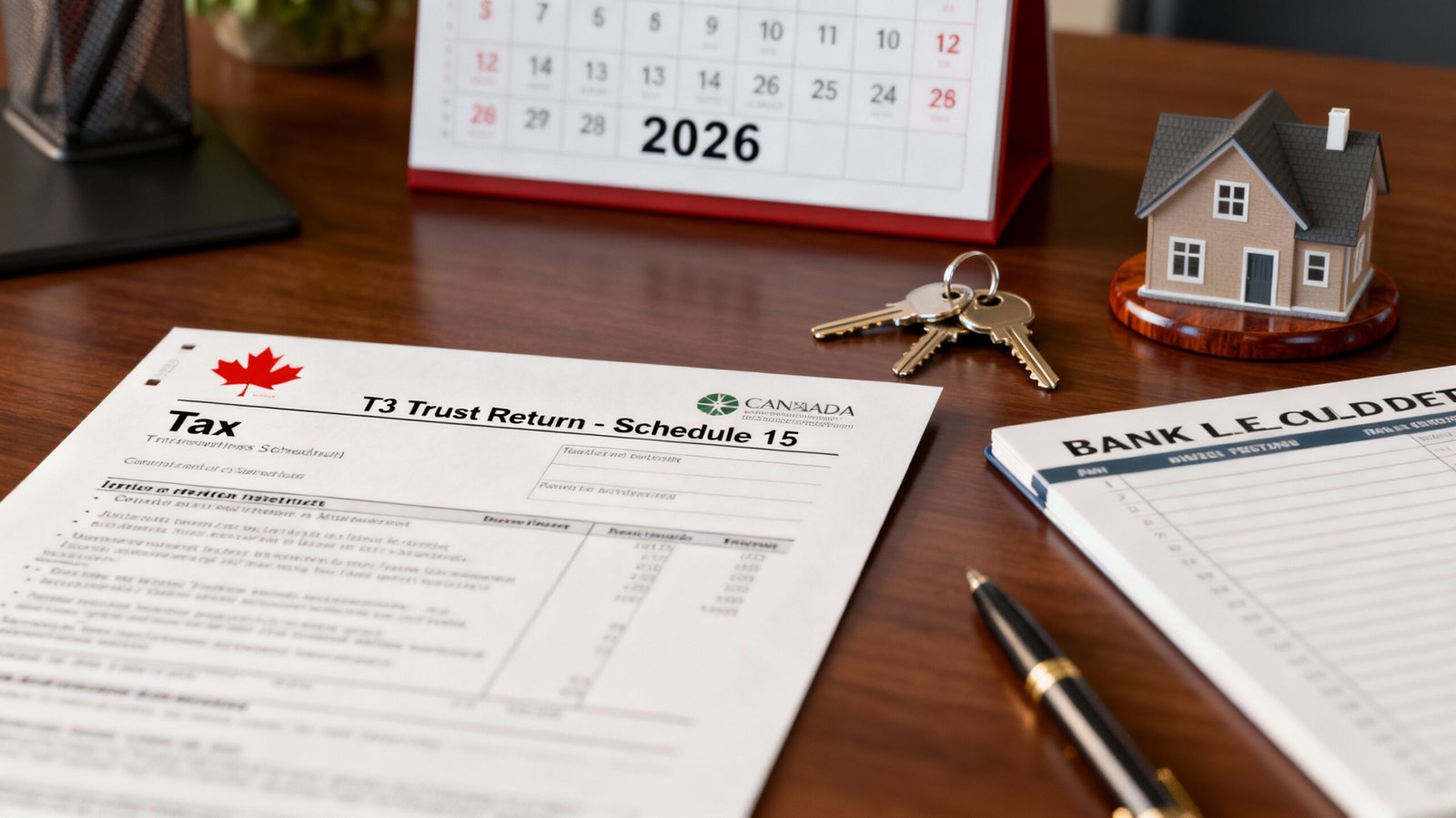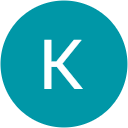Understanding Sole Proprietorship and Tax Obligations
A sole proprietorship represents the simplest and most common business structure in Canada. As a sole proprietor, you own and control your business as a single individual, and legally, you and your business are considered the same entity. This structure offers simplicity and low startup costs, but it also means you bear complete personal liability for all business obligations and debts.
From a tax perspective, sole proprietorship income is not taxed separately from your personal income. Instead, your business income flows directly through to your personal tax return, where it is combined with all other income sources including employment income, rental income, and investment income. This pass-through taxation structure means sole proprietors file personal income tax returns using the T1 General form with an attached T2125 form reporting business income and expenses.
For the 2025 tax year, sole proprietors face filing deadlines of June 15, 2025, for filing their returns, though any taxes owing must be paid by April 30, 2025. Understanding these deadlines, required forms, deductible expenses, and tax obligations is essential for maintaining compliance with the Canada Revenue Agency (CRA) and optimizing your after-tax income.
What Makes Sole Proprietorship Different from Other Business Structures
Sole proprietorships differ significantly from partnerships and corporations in tax treatment and compliance requirements. Understanding these differences helps you determine if sole proprietorship remains the best structure for your business or if incorporation or partnership conversion might provide tax advantages.
In a sole proprietorship, all business income belongs to you personally and is taxed at your personal marginal tax rate. For someone earning sixty thousand dollars in self-employment income, that income is added to any other personal income and taxed according to the progressive tax brackets in your province or territory. If you earn that sixty thousand dollars as business income and have no other income, you might pay approximately eighteen to twenty-five percent in combined federal and provincial income tax, depending on your province.
By contrast, if you incorporate your business, the same sixty thousand dollars would be taxed at corporate rates, which are significantly lower for active business income. Many Canadian corporations qualify for the small business deduction, allowing the first five hundred thousand dollars of active business income to be taxed at approximately nine to twelve percent federally, plus applicable provincial rates. This corporate rate is substantially lower than personal marginal rates, creating a tax deferral opportunity.
However, sole proprietorship offers advantages that incorporation does not. There is no requirement for annual corporate filings, no additional accounting complexity, and no separate corporate tax return filing. The business income and expenses flow directly onto your personal tax return. For many small businesses earning modest profits, this simplicity makes sole proprietorship the preferred structure.
Partnerships, where two or more individuals operate a business together, use pass-through taxation similar to sole proprietorships. Each partner reports their share of partnership income on a personal T2125 form, with only the added complexity of partnership accounting and profit sharing. Partnerships must file T5013 Partnership Information Returns if they exceed certain revenue or asset thresholds.
Form T2125: The Core Document for Sole Proprietor Tax Filing
Form T2125, officially titled Statement of Business or Professional Activities, is the fundamental tax form for sole proprietors filing Canadian income tax returns. This form combines the functions of the previous T2124 (Statement of Business Activities) and T2032 (Statement of Professional Activities) forms.
The T2125 form is not filed separately. Instead, it is completed and attached as a schedule to your T1 General Personal Income Tax and Benefit Return. The form has multiple parts, each serving specific purposes in reporting your business income and expenses.
Part 1: Identification and Business Information
Part 1 requires basic identification information including your full legal name, Social Insurance Number (SIN), and business information. You must provide your business name, the address where your business operates, and your CRA business number. The business number is a fifteen-digit identifier assigned by the CRA, typically consisting of nine digits for the business account and six characters for the program identifier.
You must indicate the fiscal period covered by your T2125. For most sole proprietors, this is the calendar year from January 1 through December 31. However, if you have elected to use a non-calendar fiscal period, you must indicate the actual period your business covers.
You must also select your industry code, which categorizes your business type. The CRA uses industry codes to track business types and revenue patterns. Selecting the correct code ensures the CRA processes your return efficiently and compares your financial results to similar businesses.
Part 2: Income Section
Part 2 requires reporting all business income from your sole proprietorship. This includes gross income from sales, fees, commissions, and any other business revenue.
If you sell products, you must report gross sales before deducting the cost of goods sold. The form then requires calculating the cost of goods sold (beginning inventory plus purchases or production costs minus ending inventory) separately, with the result deducted to reach gross profit.
For service-based businesses, gross income equals all revenue earned from providing services to clients or customers. This includes income received in cash, by cheque, by electronic transfer, or through digital payment platforms. Income received through gig economy platforms including ride-sharing, food delivery services, and freelance work platforms must be fully reported.
Income earned through barter transactions (trading services or products for other services or products) must also be reported at fair market value. Tips and gratuities received, whether cash or electronic, must be included in business income.
Part 3: Deductible Business Expenses
Part 3 of Form T2125 requires listing all deductible business expenses in designated categories. Claiming all eligible expenses is crucial for maximizing your tax deduction and reducing your taxable income.
Common expense categories include:
Advertising and Promotion: All advertising expenses including online advertising, social media advertising, radio and television ads, newspaper ads, business cards, brochures, and website development and maintenance costs are fully deductible.
Business Taxes, Fees, Licenses and Dues: Annual business licenses, permits, professional association membership dues, professional journal subscriptions, and trade organization memberships are deductible. However, recreational club membership dues are not deductible unless the primary purpose is business networking.
Office Supplies and Equipment: Supplies including pens, paper, printer ink, folders, and other office consumables are deductible. Equipment purchases under five hundred dollars are typically expensed immediately. Higher-value equipment must be claimed through Capital Cost Allowance.
Salaries and Wages: If you employ other individuals, you can deduct gross salaries and all employee benefits including Canada Pension Plan contributions, Employment Insurance premiums, and health insurance benefits paid on behalf of employees.
Professional Fees: Accounting and bookkeeping fees, legal fees, tax preparation fees, and consulting fees are all fully deductible business expenses.
Rent: If you rent workspace for your business, the full rent is deductible. Rent for a separate commercial space or portion of a building is typically fully deductible.
Telephone and Internet: Business telephone lines, cell phones used for business purposes, and internet service are deductible. If you use personal phone or internet for both business and personal purposes, only the business-use portion is deductible.
Utilities: If you operate from rented commercial space, utilities including electricity, gas, water, and cable are deductible. For home-based businesses, utilities are claimed through business-use-of-home calculations.
Insurance: Business liability insurance, professional insurance, property insurance for business equipment, and vehicle insurance for business-use vehicles are deductible. Personal insurance is not deductible.
Travel and Meals: Business travel including transportation, accommodation, and meals is deductible, though meals are limited to fifty percent of costs. Meal expenses must be for business purposes, whether entertaining clients or for meals while traveling for business.
Vehicle Expenses: For business-use vehicles, you can deduct fuel, insurance, registration, maintenance, repairs, lease payments, and interest on vehicle loans. These expenses are claimed based on the business-use percentage of your total driving.
Part 4: Home Office Expenses
For sole proprietors operating from home offices, Part 4 of Form T2125 allows calculating eligible home office expenses. This is one of the most valuable deductions for home-based businesses.
To qualify for home office deductions, your home office must meet one of these criteria: it is your principal place of business (where you spend more than fifty percent of your work time), or you use the space exclusively for business purposes on a regular and continuous basis.
Eligible home office expenses include utilities (electricity, heat, water), property taxes (for homeowners), mortgage interest (for homeowners, not payments), home insurance, maintenance and repairs, rent (for renters), internet and phone expenses used for business, and condo fees (where applicable).
The deduction is calculated by determining what percentage of your home is used for business. If your home office is 150 square feet and your total home is 2,000 square feet, your office represents 7.5 percent of your home. You multiply this percentage by eligible home expenses to determine your deductible amount.
Importantly, claiming Capital Cost Allowance (CCA) on your home office is generally not recommended. If you claim CCA and later sell your home, you must include all previous CCA deductions as income, and the principal residence exemption cannot be claimed on that portion of the home. For most home-based businesses, it is better to claim eligible expenses without claiming CCA.
Part 5: Vehicle Expenses and Mileage Deductions
For sole proprietors with business-use vehicles, Part 5 allows reporting vehicle-related expenses. Unlike employees who can claim a standard mileage rate of seventy-two cents per kilometre for the first five thousand kilometres and sixty-six cents for additional kilometres (or seventy-six cents and seventy cents in territories), sole proprietors cannot use a standard mileage rate.
Instead, sole proprietors must track actual vehicle expenses and calculate the business-use percentage. You maintain records of total kilometres driven annually and business kilometres driven. Then multiply total vehicle expenses (fuel, insurance, maintenance, registration, interest on loans) by the business-use percentage.
For example, if you drove thirty thousand total kilometres in 2025 and twelve thousand were for business, your business-use percentage is forty percent (twelve thousand divided by thirty thousand). If your total vehicle expenses were eight thousand dollars, your deductible business vehicle expense is three thousand two hundred dollars (eight thousand times forty percent).
The 2025 automobile deduction limits include a ceiling on capital cost allowance for passenger vehicles of thirty-eight thousand dollars and maximum deductible leasing costs of one thousand one hundred dollars per month for new leases entered into in 2025.
Part 6: Net Income Calculation
Part 6 of Form T2125 calculates your net business income by subtracting total expenses from gross income. This net income amount is carried forward to your T1 General return on line 10400, where it is combined with other income sources.
If your business has a loss in a year (expenses exceed income), the loss can often offset other personal income, reducing your total taxes owing. This loss-carryover provision makes home-based businesses particularly valuable for employed individuals earning other income, as business losses can reduce employment income taxes.
Tax Filing Deadlines and Payment Requirements for Sole Proprietors
Understanding tax filing deadlines is critical for sole proprietors. Missing deadlines results in penalties, interest charges, and potential CRA audit complications.
Filing Deadline
For sole proprietors, the filing deadline for your personal income tax return is June 15 if either you or your spouse/common-law partner are self-employed. If neither you nor your spouse are self-employed, your filing deadline is April 30. For the 2025 tax year covering income earned in 2024, the filing deadline is June 15, 2025 (or June 16, 2025, since June 15 falls on a Sunday).
This extended deadline provides three extra weeks for self-employed individuals compared to employed individuals, recognizing the additional complexity of gathering business records and calculating deductions.
Payment Deadline
Critically, the payment deadline for any taxes owing is April 30, 2025, regardless of the filing deadline. This means if your business generates tax owing, payment is due by April 30 even though you have until June 15 to file your return.
Filing on time without paying results in interest charges. The CRA charges prescribed interest on unpaid tax from April 30 onward. The prescribed rate for 2025 is approximately three percent, though this rate changes quarterly. Interest is calculated daily and compounds.
Example: If you owe five thousand dollars in taxes for 2024, the payment deadline is April 30, 2025. If you file your return on June 14 but don’t pay until June 30, you owe interest on the five thousand dollars for sixty days (April 30 to June 30). At three percent annual interest, this is approximately twenty-five dollars in interest charges.
RRSP Contribution Deadline
If you contribute to an RRSP to claim a deduction on your 2024 tax return, the contribution must be received by your financial institution by March 2, 2026. RRSP contributions made after March 2, 2026, can only be deducted on your 2025 tax return, not 2024.
Canada Pension Plan Contributions for Sole Proprietors
As a sole proprietor, you are responsible for contributing to the Canada Pension Plan (CPP) on your net self-employment income. Unlike employees, where employers contribute half and employees contribute half, self-employed individuals must contribute both the employer and employee portions, effectively doubling their contribution rate.
2025 CPP Rates and Maximums
For 2025, the CPP contribution rate structure has multiple components. The base CPP (CPP1) requires contributions at 11.9 percent of net self-employment income between the basic exemption amount of three thousand five hundred dollars and the Year’s Maximum Pensionable Earnings (YMPE) of seventy-one thousand three hundred dollars.
The CPP2 enhancement, introduced in 2024, adds an additional 8 percent contribution rate on earnings between the YMPE and 114 percent of YMPE (between seventy-one thousand three hundred and eighty-one thousand two hundred dollars for 2025).
The maximum base CPP contribution for 2025 is eight thousand sixty-eight dollars twenty cents (on earnings between three thousand five hundred and seventy-one thousand three hundred dollars). The maximum CPP2 contribution for 2025 is seven hundred ninety-two dollars (on earnings between seventy-one thousand three hundred and eighty-one thousand two hundred dollars).
However, CPP contributions are only calculated on income above the basic exemption. If you have a business loss or income below three thousand five hundred dollars, no CPP contributions are required. If you have several business losses over multiple years, the CRA may question whether your activity constitutes a legitimate business source of income.
Deductibility of CPP Contributions
An important tax benefit is that you can deduct fifty percent of your self-employment CPP contributions on line 42100 of your T1 General return. The other fifty percent generates a non-refundable tax credit at the lowest federal tax rate.
For 2025, if your maximum CPP contribution is eight thousand sixty-eight dollars, you can deduct four thousand thirty-four dollars on line 42100 (reducing your taxable income by this amount). The remaining four thousand thirty-four dollars generates a federal tax credit of approximately six hundred thirty dollars (four thousand thirty-four dollars times the lowest federal tax rate of approximately 14.5 percent) plus applicable provincial tax credits.
This split treatment ensures self-employed individuals don’t pay double tax on their CPP contributions while still receiving meaningful tax relief.
GST/HST Registration and Compliance
Many sole proprietors must register for Goods and Services Tax (GST) or Harmonized Sales Tax (HST) depending on their revenue. Understanding GST/HST obligations ensures compliance and allows you to claim valuable input tax credits.
Registration Threshold
You must register for GST/HST when your taxable supplies exceed thirty thousand dollars in any consecutive twelve-month period. This registration threshold applies whether you operate as a sole proprietor, partnership, or corporation.
Once you exceed the threshold, registration becomes mandatory, and you must collect GST/HST on all taxable supplies beginning immediately. Importantly, the registration is retroactive to when you first exceeded the threshold, meaning you become liable for GST/HST on all sales from that point forward.
The thirty thousand dollar threshold is based on taxable supplies—revenue from sales of goods and services that are subject to GST/HST. Supplies that are exempt (such as financial services) or zero-rated (such as basic groceries) do not count toward the threshold.
Registration Process
As a sole proprietor, you must first obtain a Business Number from the CRA if you don’t already have one. You can apply for a Business Number through CRA’s Business Registration Online portal or by mailing a completed Request for a Business Number form.
Once you have a Business Number, you can register for GST/HST online through the Business Registration Online portal, by phone, or by mail. Online registration through the portal is the fastest method and allows immediate confirmation of your GST/HST account number.
Input Tax Credits
Once registered, you can claim input tax credits for GST/HST paid on business expenses. If you purchase office equipment, supplies, or services for your business, you can claim the GST/HST paid as an input tax credit, which reduces your GST/HST liability.
For example, if you spend one thousand dollars on business software including five percent GST (fifty dollars), you purchase office furniture for two thousand dollars including five percent GST (one hundred dollars), and you have three thousand dollars in GST collected on sales (one hundred fifty dollars), your net GST owing is negative. You would receive a GST refund of fifty dollars (one hundred fifty collected minus one hundred paid on purchases).
The ability to claim input tax credits makes GST/HST registration valuable even for businesses slightly below the thirty thousand dollar threshold. Many small business owners voluntarily register to capture these input tax credits.
GST/HST Remittance Deadlines
Once registered, GST/HST must be remitted to the CRA on a regular basis. Filing frequency depends on your GST/HST collected and can be monthly, quarterly, or annually. Most small businesses file monthly GST/HST returns due by the 14th of the following month.
Filing frequency is determined by the CRA based on your business size. You will receive notification of your required filing frequency when you register.
Sole Proprietor Business Expense Deductions: Comprehensive List
Maximizing deductible business expenses is essential for reducing your taxable income and increasing after-tax profit. The CRA allows deduction of any reasonable current expense incurred to earn business income, though personal expenses are never deductible.
Operating Expenses
Advertising and Marketing: Digital advertising, social media advertising, website hosting, domain names, business cards, brochures, promotional items, and traditional advertising through radio, television, and print media are fully deductible.
Business Licenses and Permits: Annual business licenses, professional licensing fees, permits required to operate your business, and renewal fees are deductible.
Professional Association Dues: Membership dues in relevant trade associations, professional organizations, and industry groups are deductible. These dues support your professional development and network within your industry.
Office Supplies: Stationery, printer ink, paper, envelopes, file folders, desk organizers, notepads, and other consumable office supplies are fully deductible.
Accounting and Legal Services: Accounting fees for bookkeeping, tax preparation, financial statement preparation, audits, and reviews are deductible. Legal fees for business purposes including contract review, business structure advice, and dispute resolution are deductible. Personal legal fees are not deductible.
Rent for Business Space: If you rent commercial space separate from your residence, the full rent is deductible. This includes shared office space, retail storefronts, manufacturing facilities, and warehouse space.
Utilities: For commercial rental space, all utilities including electricity, gas, water, and sewer are deductible. For home offices, utilities are claimed through the home office expense calculation.
Business Insurance: Liability insurance, professional indemnity insurance, property insurance for business equipment, workers’ compensation insurance, and commercial vehicle insurance are deductible. Personal insurance such as life insurance or personal auto insurance is not deductible.
Telephone and Internet: Business phone lines, mobile phones used for business, and internet services are deductible. If you use a personal phone or internet for both business and personal purposes, only the business-use percentage is deductible.
Employment Costs
Salaries and Wages: Gross salaries paid to employees, including all compensation, bonuses, commissions, and benefits, are fully deductible business expenses.
Employee Benefits: Health insurance benefits, dental insurance benefits, life insurance benefits, vision insurance benefits, and retirement plan contributions paid to or for employees are deductible.
CPP and EI Contributions: Your employer portion of Canada Pension Plan contributions and Employment Insurance premiums paid for employees are deductible. These typically add approximately 7.95 percent to gross salaries (5.95 percent CPP plus 1.64 percent EI, varying slightly by province).
Workers’ Compensation: Premiums paid to provincial workers’ compensation boards for employees are deductible.
Training and Development: Costs of training, courses, conferences, and professional development for employees are deductible business expenses.
Travel and Vehicle Expenses
Travel Expenses: Airfare, train tickets, bus fares, and rental car costs for business travel are fully deductible. Accommodation while traveling for business is deductible. Travel must be undertaken for business purposes, not personal reasons.
Meals and Entertainment: Fifty percent of meal costs while traveling for business or entertaining clients are deductible. This limitation recognizes the personal component of dining expenses. The one-hundred percent deduction does not apply. Entertainment expenses for theater, sporting events, or hospitality are also limited to fifty percent.
Vehicle Expenses: For business-use vehicles, fuel, maintenance, repairs, insurance, registration, and interest on vehicle loans are deductible based on business-use percentage. The CRA does not allow a standard mileage rate for sole proprietors; actual vehicle expenses must be tracked and the business-use percentage calculated.
Parking and Tolls: Parking fees and highway tolls incurred while conducting business travel are deductible.
Professional Development
Courses and Training: Costs of courses, seminars, conferences, and workshops to maintain or upgrade professional skills are deductible. These must be for skills directly related to your business or profession.
Books and Subscriptions: Professional journals, industry publications, reference books, and online subscriptions related to your business are deductible.
Professional Licenses and Designations: Costs to obtain or maintain professional licenses or designations required to operate your business are deductible.
Deductions Not Allowed
Personal Expenses: Clothing, personal grooming, personal meals, and other personal expenses are not deductible, even if you wear them while working.
Capital Expenditures: Large asset purchases must be claimed through Capital Cost Allowance over multiple years, not expensed immediately. The CRA distinguishes between current expenses and capital expenditures based on whether the cost provides value beyond the current tax year.
Meals at Your Home: While meal costs while traveling for business are fifty percent deductible, meals at your home are not deductible.
Club Memberships for Recreation: Membership dues for recreational clubs, golf clubs, sports clubs, and country clubs are not deductible, even if some business networking occurs at the club.
Personal Taxes and Penalties: Income tax paid on your personal returns, personal property tax, and tax penalties for late payments are not deductible.
Record Keeping Requirements for CRA Compliance
The CRA requires that sole proprietors maintain complete business records supporting all income and expense claims. Understanding and meeting record-keeping requirements is essential for defending your tax position if audited.
Six-Year Retention Requirement
All business records and supporting documentation must be kept for at least six years from the end of the last tax year they relate to. For records relating to 2024, the retention period extends through 2030.
The six-year period applies to all business records including invoices, receipts, bank statements, cancelled cheques, contracts, financial statements, payroll records, and any other documents supporting your income and expense claims.
Types of Records to Keep
Income Records: Keep detailed records of all business income including customer invoices, sales receipts, bank deposits, payment records from clients, and documentation of any barter transactions.
Expense Records: Maintain original receipts for all business expenses including original invoices from suppliers, credit card statements showing business expenses, purchase orders, and payment documentation.
Banking Records: Keep all bank statements for business accounts and cancelled cheques showing business payments. These records demonstrate the flow of funds and support expense claims.
Vehicle Records: Maintain a vehicle log documenting business kilometers, personal kilometers, dates, destinations, and business purposes of trips. Keep receipts for fuel, maintenance, repairs, and insurance related to business-use vehicles.
Payroll Records: If you employ others, keep payroll registers, individual employee records including hours worked and compensation paid, T4 slips issued to employees, and records of CPP and EI remittances.
GST/HST Records: If registered for GST/HST, maintain detailed records of sales subject to GST/HST, GST/HST collected, purchases subject to GST/HST, GST/HST paid, and input tax credits claimed.
Capital Asset Records: For assets claimed through Capital Cost Allowance, maintain original purchase documentation, cost basis, date of acquisition, and records of any disposal including sale price and date.
Record Storage and Accessibility
Records must be maintained in Canada at your place of business or residence, either in physical form or electronic format. Cloud-based accounting software storing data in foreign jurisdictions may not comply with CRA requirements unless you obtain written CRA permission to store records outside Canada.
Records must be organized, clearly marked, and readily accessible for CRA review if requested. The CRA can request records at any time and may audit a previous tax year. If your records are disorganized or incomplete, the CRA may estimate your income and expenses based on industry norms, which often results in higher taxes owing.
Quarterly Tax Installment Payments
If your self-employment business income is substantial, you may be required to pay quarterly tax installments to the CRA.
Installment Requirements
You must pay tax installments if both conditions apply: your net tax owing exceeds three thousand dollars (or one thousand eight hundred dollars for Quebec residents) in the current year, and your net tax owing in either of the previous two years exceeded three thousand dollars (or one thousand eight hundred dollars for Quebec).
Once you exceed the three thousand dollar threshold, you must make quarterly installment payments for all subsequent years until your net tax owing drops below three thousand dollars for three consecutive years.
Payment Schedule
Quarterly installment payments are due September 15 and December 15 for tax year installments due in the current year. The amount is typically calculated as twenty-five percent of your estimated current-year tax owing on September 15 and 25 percent on December 15, or alternatively, seventy-five percent of prior-year tax owing on September 15 and twenty-five percent on December 15.
You have flexibility in calculating installments. You can use the prior-year amount if you expect similar income, or estimate current-year income if you anticipate changes in your business income.
Tax Planning Strategies for Sole Proprietors
Several strategies can help sole proprietors reduce taxable income and optimize their tax position.
Maximizing Deductible Expenses
Reviewing your business expenses and claiming all eligible deductions is the most straightforward tax-reduction strategy. Many sole proprietors miss deductions by not understanding what qualifies. Consulting with a tax professional can identify overlooked deductions.
Income Timing
If your sole proprietorship is on a cash basis accounting method (available only for farming, fishing, and commission sales), timing the recognition of income and expenses can reduce taxable income in high-income years. Delaying customer invoicing or accelerating expense payments can shift income recognition to subsequent years with lower marginal tax rates.
Spousal Income Splitting
If your spouse is not employed or has significantly lower income than you, paying your spouse a reasonable salary for legitimate work in your business creates a deduction for you and shifts income to your spouse’s lower tax bracket. The salary must represent genuine work performed and be reasonable for the work done.
Capital Expenditure Timing
For significant capital purchases, timing the acquisition strategically can optimize tax deductions. Since depreciation continues indefinitely at declining rates, accelerating major asset purchases can increase near-term depreciation deductions. Alternatively, deferring acquisitions to lower-income years may be strategic.
Incorporating Your Business
As your sole proprietorship grows and generates increasing profits, incorporating transforms your business from pass-through taxation to corporate taxation. At income levels exceeding your personal living requirements, corporate taxation at small business rates (nine to twelve percent) versus personal marginal rates (often thirty-three to fifty-plus percent) creates significant savings opportunities.
BOMCAS Canada: Your Expert Partner for Sole Proprietor Tax Filing and Optimization
BOMCAS Canada specializes in comprehensive tax services for sole proprietors, helping them navigate complex tax filing requirements, identify all eligible deductions, and develop tax strategies that minimize annual tax liability while ensuring full CRA compliance.
Complete Sole Proprietor Tax Preparation Services
BOMCAS Canada provides end-to-end tax preparation for sole proprietors, handling all aspects of T1 General return preparation and T2125 form completion. The firm’s experienced tax professionals understand the nuances of self-employed taxation and ensure all eligible deductions are captured and properly documented.
For sole proprietors with complex situations including multiple business ventures, significant vehicle expenses, substantial home office deductions, or rental properties, BOMCAS Canada provides comprehensive analysis ensuring complete and accurate reporting while maximizing tax efficiency.
Business Expense Analysis and Optimization
Many sole proprietors fail to claim all eligible business expenses, overpaying taxes as a result. BOMCAS Canada reviews your business operations and identifies often-missed deductions including home office expenses, vehicle expenses, professional development costs, and other operating expenses.
The firm ensures expenses are properly calculated according to CRA guidelines, distinguishing between deductible current expenses and capital expenditures requiring depreciation through Capital Cost Allowance.
GST/HST Registration and Compliance
For sole proprietors approaching the thirty-thousand-dollar registration threshold or already registered, BOMCAS Canada provides GST/HST registration guidance, filing services, and input tax credit optimization. The firm ensures timely GST/HST remittance and maximizes available input tax credits, often resulting in net GST/HST refunds for businesses with substantial operating expenses.
Record Keeping and Organization Systems
BOMCAS Canada helps sole proprietors establish effective record-keeping systems ensuring CRA compliance and simplifying tax filing. The firm can implement cloud-based accounting systems providing real-time financial visibility while maintaining CRA-compliant record storage.
Organized records also enable strategic tax planning throughout the year rather than scrambling to gather documentation at tax time.
Quarterly Installment Payment Guidance
For sole proprietors subject to quarterly installment payment requirements, BOMCAS Canada calculates required payment amounts and ensures timely remittance, preventing costly penalties and interest charges.
The firm monitors changes in your business income throughout the year and adjusts installment estimates as needed, potentially reducing over-payment and improving cash flow management.
Strategic Tax Planning for Growth
As your sole proprietorship grows and becomes increasingly profitable, BOMCAS Canada evaluates whether incorporation would provide tax advantages. The firm models incorporation scenarios and evaluates whether the complexity and cost of incorporation justifies the tax savings.
For growing businesses approaching the one hundred fifty-thousand-dollar annual income threshold, professional tax planning often identifies incorporation as a valuable strategy that saves tens of thousands of dollars annually in taxes.
Virtual Service Availability
BOMCAS Canada delivers all sole proprietor tax services virtually, serving clients throughout Canada. Virtual service delivery eliminates geographic barriers and reduces overhead costs, translating to more affordable pricing compared to traditional office-based accounting firms.
You receive expert professional guidance from experienced tax professionals regardless of your location, with flexible scheduling accommodating your availability.
BOMCAS Canada Advantage
BOMCAS Canada’s sole proprietor tax services reflect deep expertise in Canadian self-employment taxation, comprehensive understanding of CRA compliance requirements, commitment to identifying all available tax deductions, and dedication to developing tax strategies aligned with your business goals.
The firm combines tax preparation expertise with strategic tax planning, ensuring your current-year taxes are accurate and compliant while building a long-term tax strategy that optimizes lifetime tax savings.
Important Dates and Deadlines for 2025-2026
April 30, 2025: Deadline to pay any 2024 taxes owing and deadline to file 2024 personal income tax return for those not self-employed.
June 15, 2025: Filing deadline for 2024 personal income tax returns for self-employed individuals and those with self-employed spouses.
September 15, 2025: First quarterly tax installment payment due for 2025 (if installments are required).
December 15, 2025: Second quarterly tax installment payment due for 2025 (if installments are required).
March 2, 2026: Deadline to contribute to RRSP for 2025 tax deduction.
April 30, 2026: Deadline to pay 2025 taxes owing and filing deadline for those not self-employed.
June 15, 2026: Filing deadline for 2025 personal income tax return for self-employed individuals.
Conclusion: Professional Help Maximizes Your After-Tax Income
Filing income tax as a sole proprietor involves navigating multiple forms, claiming eligible deductions, meeting critical deadlines, and managing CPP contributions, GST/HST compliance, and potential installment payments. Understanding these requirements ensures you maintain compliance while capturing all available tax deductions.
However, the complexity of self-employment taxation creates opportunities to miss valuable deductions and overlook tax optimization strategies. Professional guidance from BOMCAS Canada ensures your tax filing is accurate and complete while identifying tax-saving opportunities that reduce your annual tax liability.
Whether you are just starting a sole proprietorship, managing an established business, or approaching potential incorporation, BOMCAS Canada provides the expert guidance needed to optimize your tax situation and maximize after-tax income.
Contact BOMCAS Canada today for a complimentary consultation to discuss your sole proprietor tax situation and explore opportunities to reduce your tax liability while ensuring complete CRA compliance. The firm’s experienced tax professionals are ready to help you navigate sole proprietor taxation successfully.










 View Our Location
View Our Location





 181 Meadowview Bay, Sherwood Park, AB T8H 1P7, Canada (Online Clients Only)
181 Meadowview Bay, Sherwood Park, AB T8H 1P7, Canada (Online Clients Only)